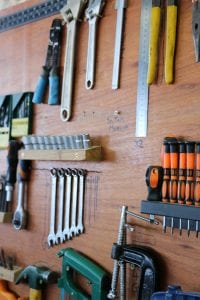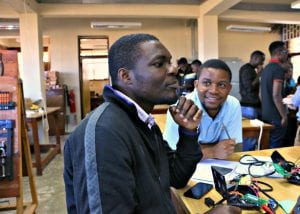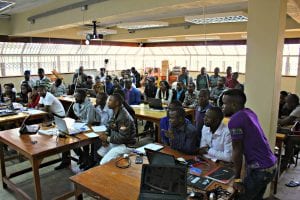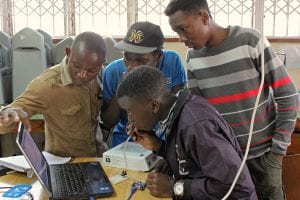Readers!
Matt is back on the blogging front, gracing us with his unique insights into life at the Polytechnic Design Studio. Last week, the studio opened its doors to any and all interested in learning prototyping software. Here are his reflections…
Here at the Poly, the diploma students are getting close to graduation and are busy with final year projects, so they requested a workshop to learn Arduino, an open source electronic prototyping tool – sort of like an ultra-simple computer.
Francis Masi – one of the awesome graduates we hired to work on projects and teach students about practical engineering here at the studio – happens to also teach diploma students in telecommunications on the weekends. Although he spends most of his time doing electrical design for biomedical engineering, Francis is very passionate about telecommunications. He studied telecom at the Poly and wants to get a Master’s in it as well.
Andrew Ndalama, the other awesome recent Poly graduate we hired, offered to co-teach the workshop.
On Friday, Francis sent out a notification stating there’d be an Arduino workshop on Tuesday, Wednesday, and Thursday the following week, spanning 4 hours each day.
By Monday morning, 47 students had signed up to attend. If you haven’t seen photos of the design studio, that’s quite a few. Clearly, there is an overwhelming demand for this sort of thing.
During the workshop, each group built a pressure sensor to tell if an oxygen concentrator was providing the correct amount of pressure. Students started by illuminating simple LED lights and making them blink. They then used a potentiometer (similar to the volume dial on an old radio) to turn the LEDs on one at a time.
On the workshop’s second day, they replaced the potentiometer with a pressure sensor, so that as they blew into a tube the LEDs would light up one-by-one.
We broke the workshop’s problem down into manageable pieces, and every time a team accomplished the immediate task, Francis applauded them loudly and proudly. He is such a positive force in the studio. We’re lucky to have him.
On the third and final workshop day, Andrew taught the group about sensors and how to use them to measure different “stimuli” or “measurants” in the environment. Based on previous interactions with students – and our own experience prototyping devices – we tried to dispel common misconceptions about sensors head-on.
For example, students often ask for a sensor that can measure something fairly complicated, like one that can detect if a person is present or not (much like sensors that open automatic doors). However, we cannot buy a “person presence sensor.” Rather, Andrew discussed that this type of device must be built from basic light, infrared, and pressure sensors instead.
We ended a very successful workshop by talking about the more advanced tools the students could use to complete their projects and let them wrap up their designs.
In general, the students came to the workshop with very different levels of knowledge. Some were proficient at programming and had gotten a little exposure in classes, while others didn’t know anything about programming, but could assemble a strong circuit.
I looked on as they learned from each other, applied the knowledge they each brought to the table, identified gaps in that knowledge, and solved problem after problem as a team.
Best wishes from Blantyre,
Matt





